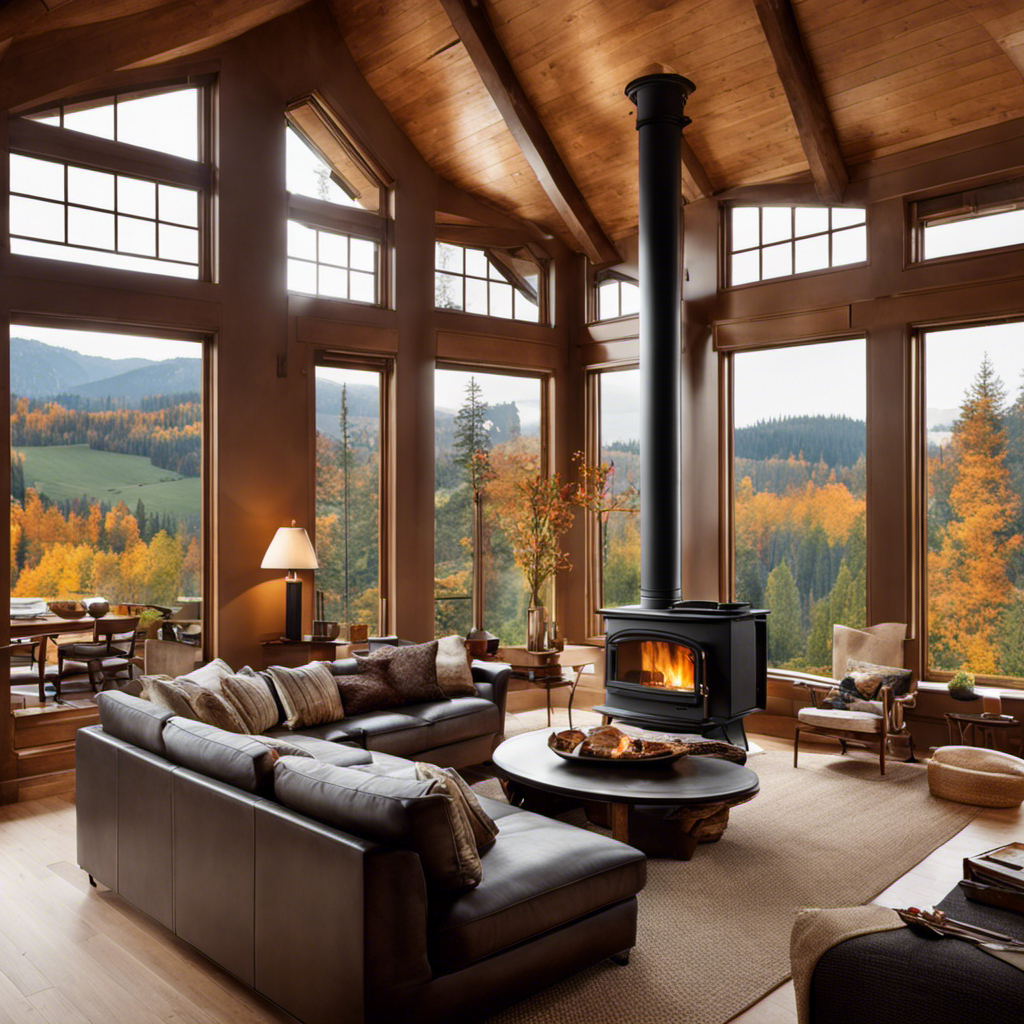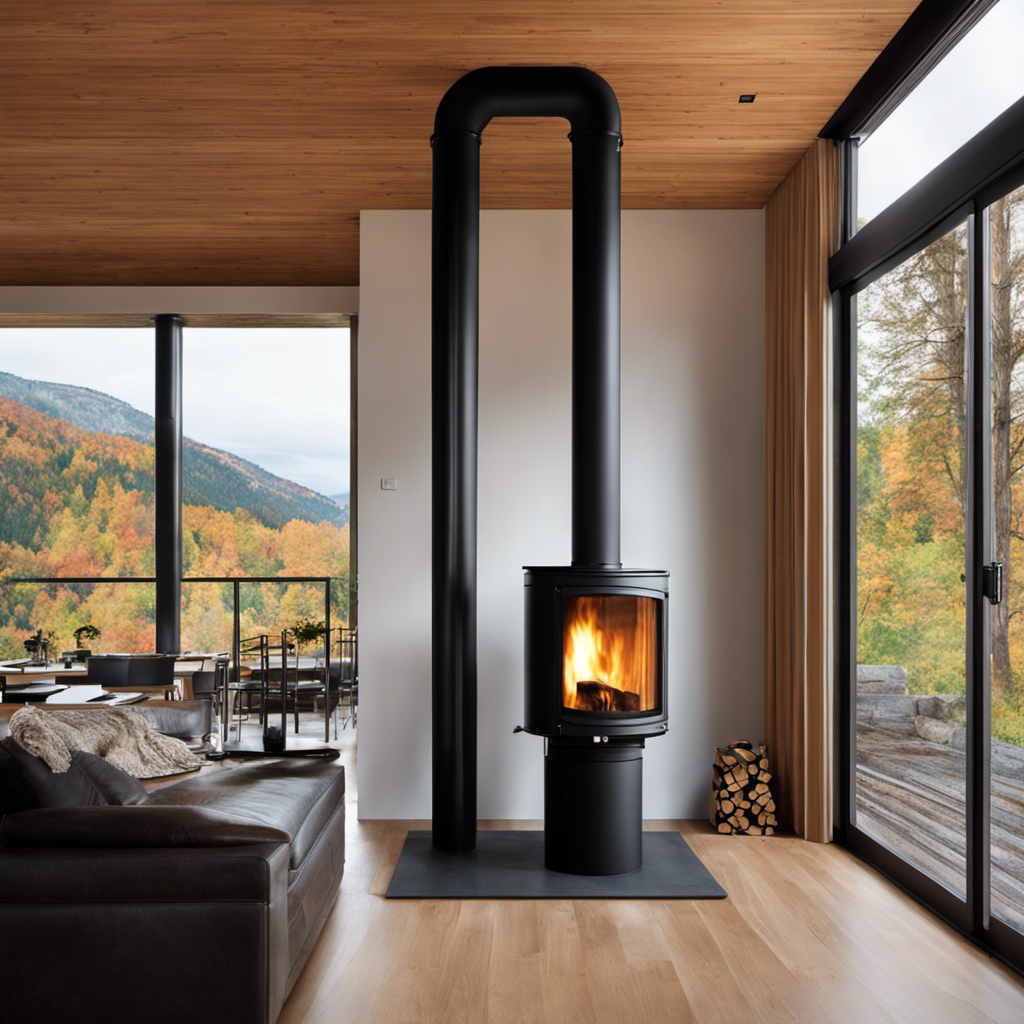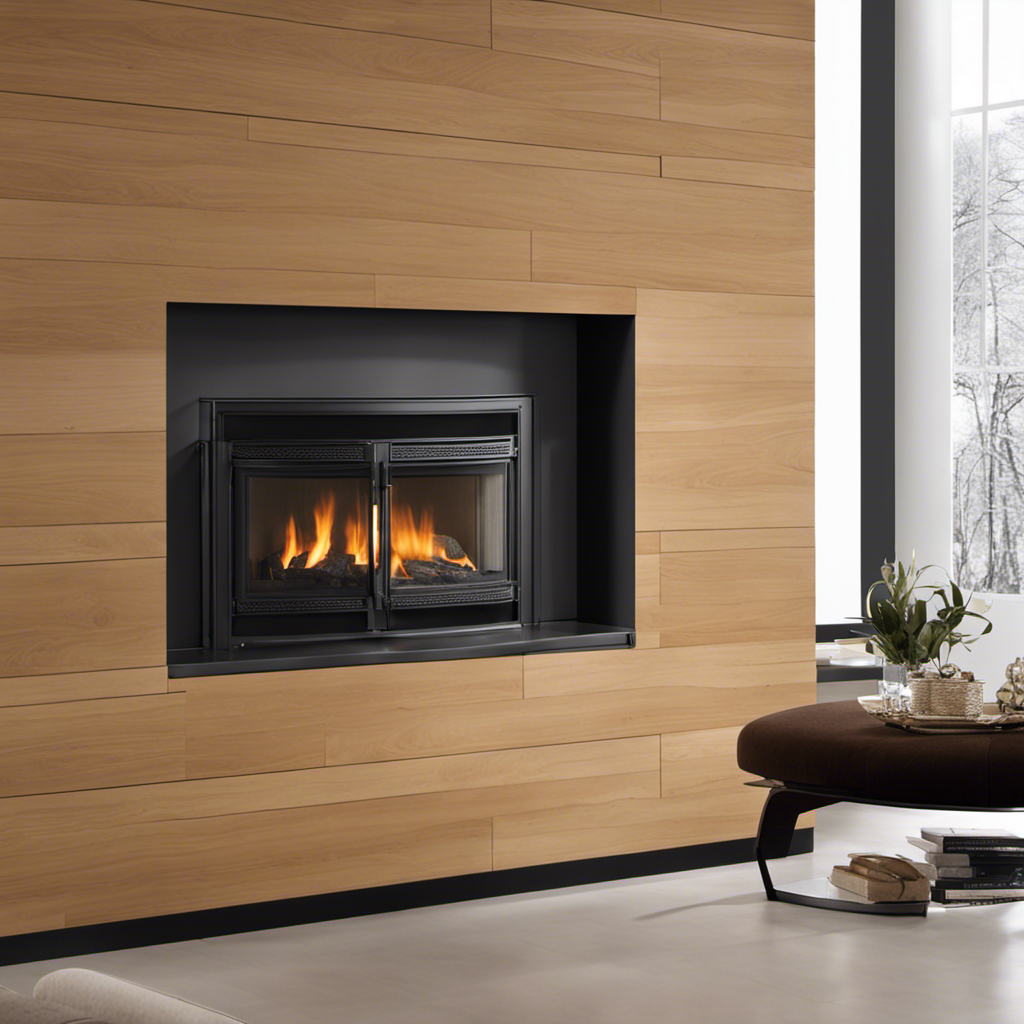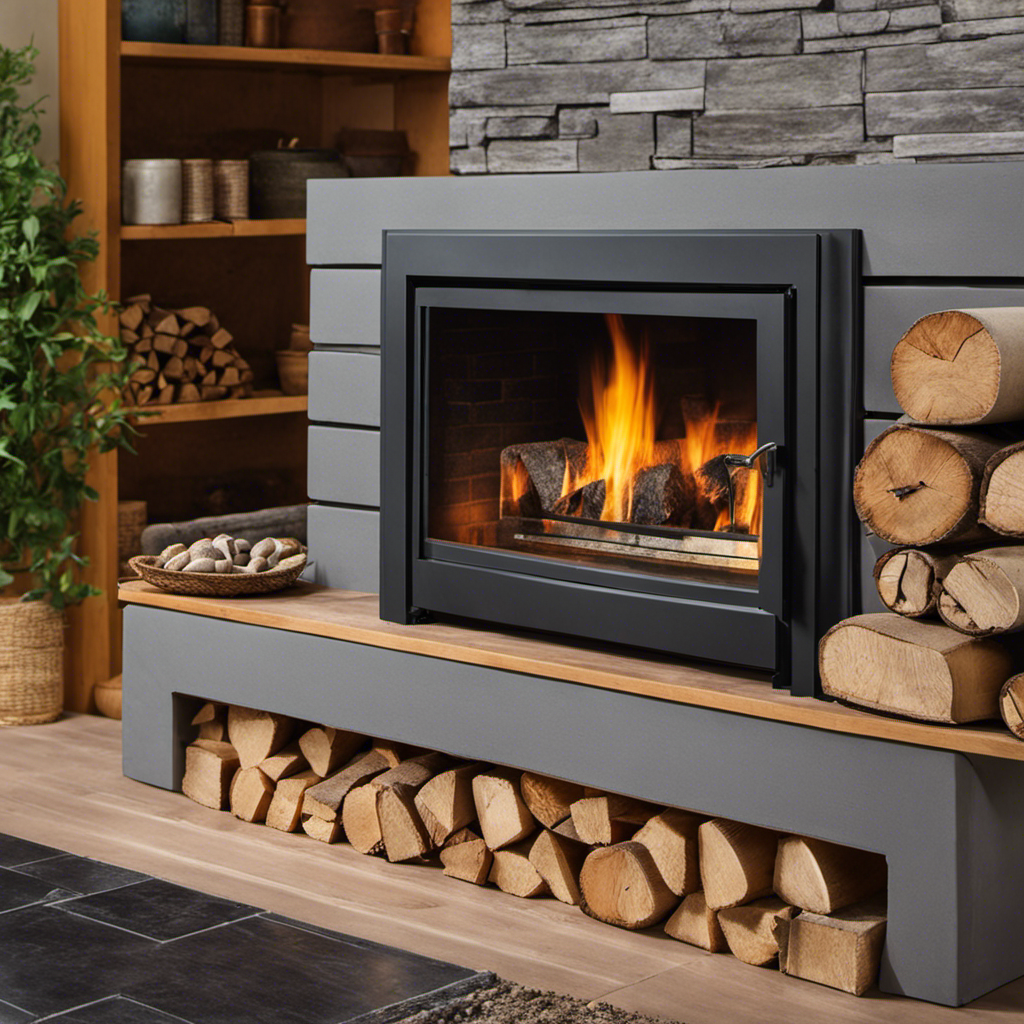I have always had a special fondness for the cozy warmth and distinctive crackling sounds of a wood stove. However, when the time came to choose one for my home, I was faced with a wide array of options that left me feeling a bit overwhelmed. “What size wood stove do I need?” is a common question among homeowners, and selecting the correct size is essential for effective heating.
In this article, we’ll delve into the technical details of determining the perfect wood stove size based on room dimensions, BTU output, fuel type, and safety considerations. Let’s get started!
Key Takeaways
- Calculate heat loss and square footage to determine the required BTU output.
- Consider factors like insulation, windows, and doors that contribute to heat loss.
- Choose a wood stove with a BTU output that can adequately heat the entire space.
- Follow manufacturer’s guidelines for clearance requirements and proper ventilation to ensure safety.
Understanding the Heating Needs of Your Space
I need to determine the heating needs of my space before deciding on the size of the wood stove. Calculating heat loss and evaluating insulation quality are crucial steps in this process.
To accurately calculate heat loss, I’ll consider factors such as the size of the room, the number of windows and doors, and the insulation level. I’ll also take into account the climate in my area, as it will impact the amount of heat required.
By evaluating the insulation quality, I can determine how well my space retains heat. This will help me choose a wood stove that can effectively heat the room without wasting energy.
Once I’ve assessed the heating needs of my space, I can move on to determining the size based on room dimensions.
Determining the Size Based on Room Dimensions
To accurately determine the size based on room dimensions, it’s important to measure the length, width, and height of the space and then calculate the square footage. This will give you an idea of the overall size of the room and help you determine the appropriate wood stove size.
But calculating the heat loss of your room is equally important. Factors such as insulation, windows, and doors play a significant role in heat loss. Assessing the insulation of your space will help you understand how well it retains heat.
Poor insulation means more heat loss, requiring a larger wood stove to compensate. On the other hand, a well-insulated room will retain heat better, allowing for a smaller wood stove.
Therefore, it’s crucial to consider both room dimensions and insulation when determining the size of a wood stove for optimal heating efficiency.
Choosing the Right BTU Output for Efficient Heating
The key to efficient heating is selecting the appropriate BTU output for optimal warmth in your home. To ensure you choose the right wood stove, there are a few factors to consider:
-
Calculating heat loss: Assess the insulation levels and square footage of your home to determine the amount of heat that’s lost. This will help you determine the BTU output required to compensate for the heat loss and maintain a comfortable temperature.
-
Sizing the wood stove for multiple rooms: If you plan on heating more than one room with your wood stove, consider the combined square footage of all the rooms. Calculate the total heat loss for the entire space and select a wood stove with a BTU output that can adequately heat the entire area.
-
Efficiency rating: Look for wood stoves with high efficiency ratings, as they can provide more heat output using less wood, resulting in cost savings and reduced environmental impact.
Considering the Type of Fuel and Burn Time
Considering the type of fuel and its burn time is crucial when selecting a wood stove for efficient heating. Fuel efficiency plays a significant role in determining the overall cost of operating a wood stove.
Different types of wood have different energy content and burn characteristics, which directly impact how long the fuel will last and how efficiently it will heat your home. Hardwoods, such as oak or maple, burn slower and produce more heat compared to softwoods like pine or fir. This means that although hardwoods may be more expensive to purchase, they provide better fuel efficiency and can ultimately save you money in the long run.
It’s also important to consider the moisture content of the wood, as wet wood burns less efficiently and produces more smoke.
Factoring in Safety and Clearances for Proper Installation
I must ensure that I factor in safety and clearances for proper installation of my wood stove. This is crucial to prevent any accidents or hazards.
Here are three important things to consider when it comes to safety and clearances:
-
Clearance requirements: It’s essential to follow the manufacturer’s guidelines for clearance requirements. This includes the distance between the stove and combustible materials such as walls, furniture, and curtains. Adequate clearance ensures that there’s no risk of fire or overheating.
-
Importance of proper ventilation: Proper ventilation is necessary to ensure the efficient operation of the wood stove. It helps to remove smoke, gases, and pollutants from the room. It also prevents the buildup of carbon monoxide, a deadly gas. Ensure that your wood stove is properly vented to the outside to maintain a healthy indoor environment.
-
Professional installation: It’s highly recommended to have your wood stove installed by a professional. They have the expertise to ensure that the stove meets all safety standards and is installed correctly. A professional will also provide guidance on clearance requirements and ventilation options specific to your installation.
Taking these factors into consideration will help you install your wood stove safely and enjoy its warmth and efficiency without any worries.
Frequently Asked Questions
Can a Wood Stove Be Used as the Primary Source of Heat for an Entire Home?
Yes, a wood stove can be used as the primary heat source for an entire home. However, it’s important to consider the efficiency of the wood stove to ensure it can adequately heat the space.
What Are the Pros and Cons of Using a Wood Stove Compared to Other Heating Options?
When considering the pros and cons of wood stove heating versus other options, it’s important to weigh factors like efficiency, cost, and environmental impact. Let’s dive into the details and explore the possibilities.
Is It Necessary to Have a Chimney for a Wood Stove Installation?
I’ll need to consider chimney alternatives and venting options for a wood stove installation. It’s important to ensure proper ventilation to prevent smoke and gases from building up in the house.
How Much Does It Cost to Install a Wood Stove, Including Any Necessary Modifications or Accessories?
Installing a wood stove requires considering factors like the size of the area to be heated, insulation, and local building codes. The cost of installation can vary depending on these factors and any necessary modifications or accessories.
Are There Any Government Regulations or Permits Required for Installing a Wood Stove?
When it comes to wood stove installation, it’s important to be aware of any government regulations or permits that may be required. These requirements ensure safety and compliance with local building codes.
Conclusion
In conclusion, determining the size of a wood stove requires careful consideration of various factors. These factors include the heating needs of your space, room dimensions, BTU output, fuel type, and safety requirements.
Just like a skilled conductor leading a symphony, selecting the right wood stove ensures efficient and effective heating. This selection creates a warm and comforting atmosphere in your home.
So, choose wisely, and let the harmonious warmth of a perfectly sized wood stove envelop you in its cozy embrace.











